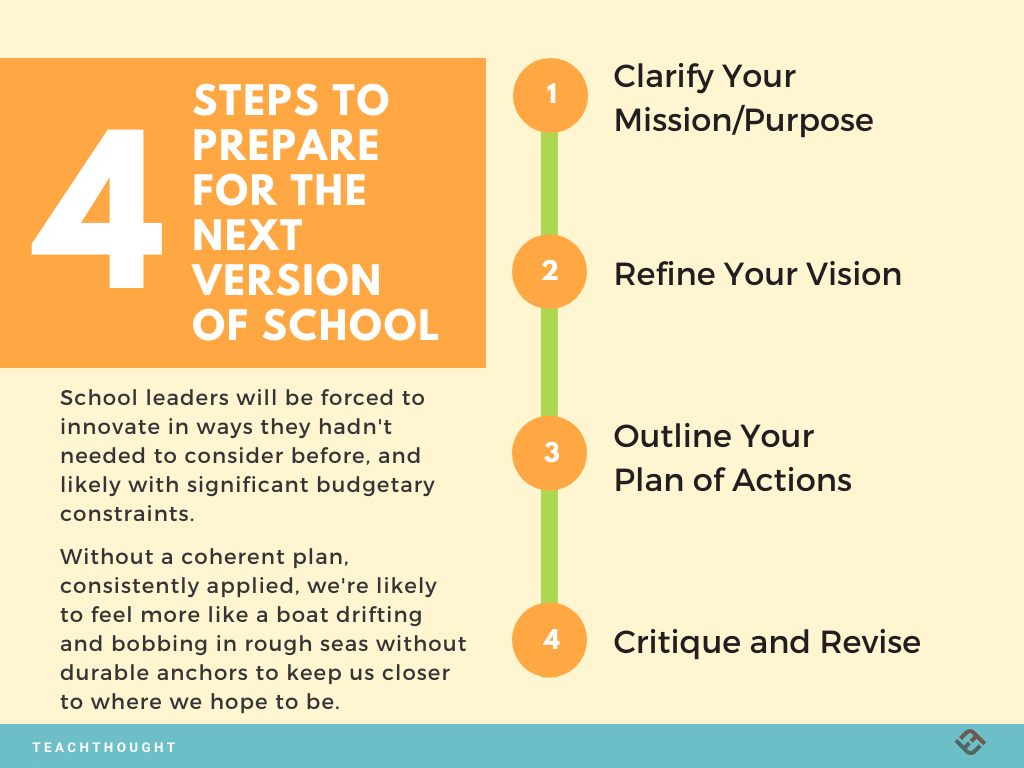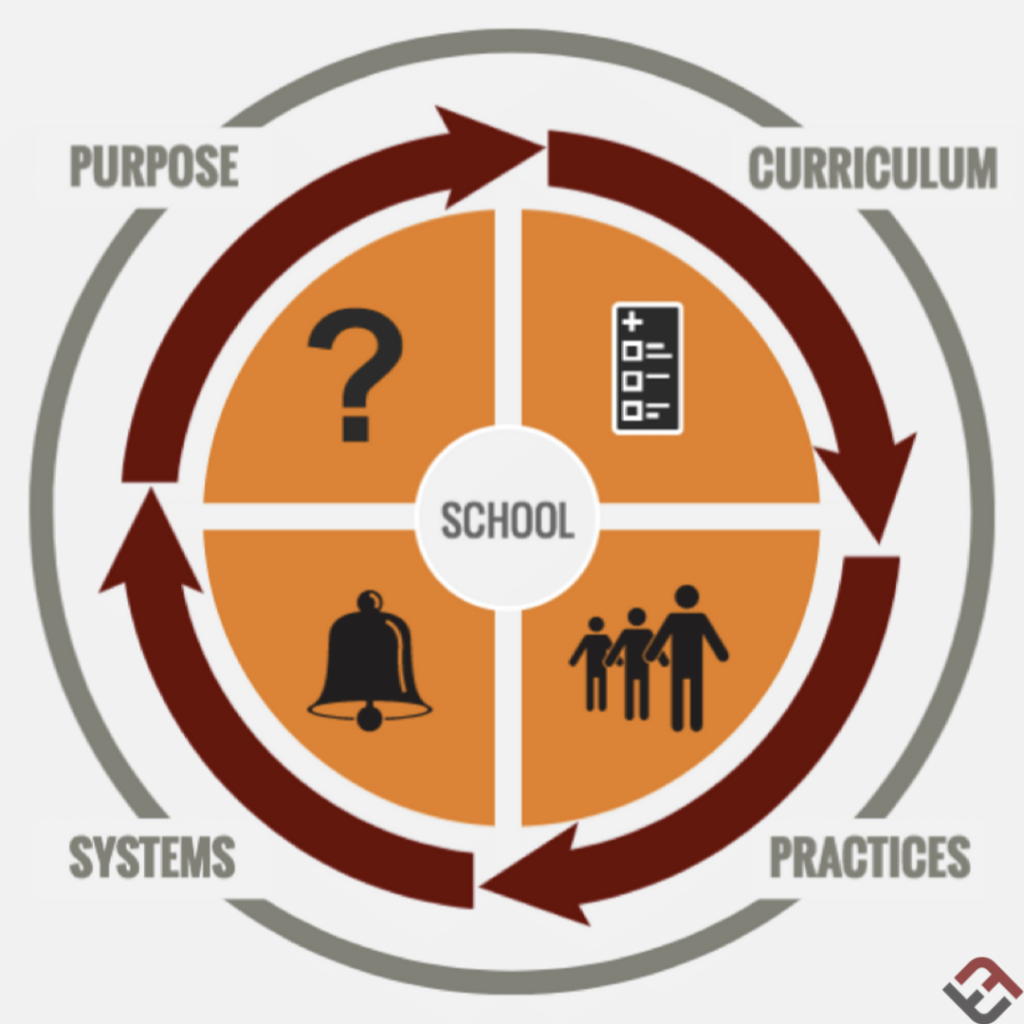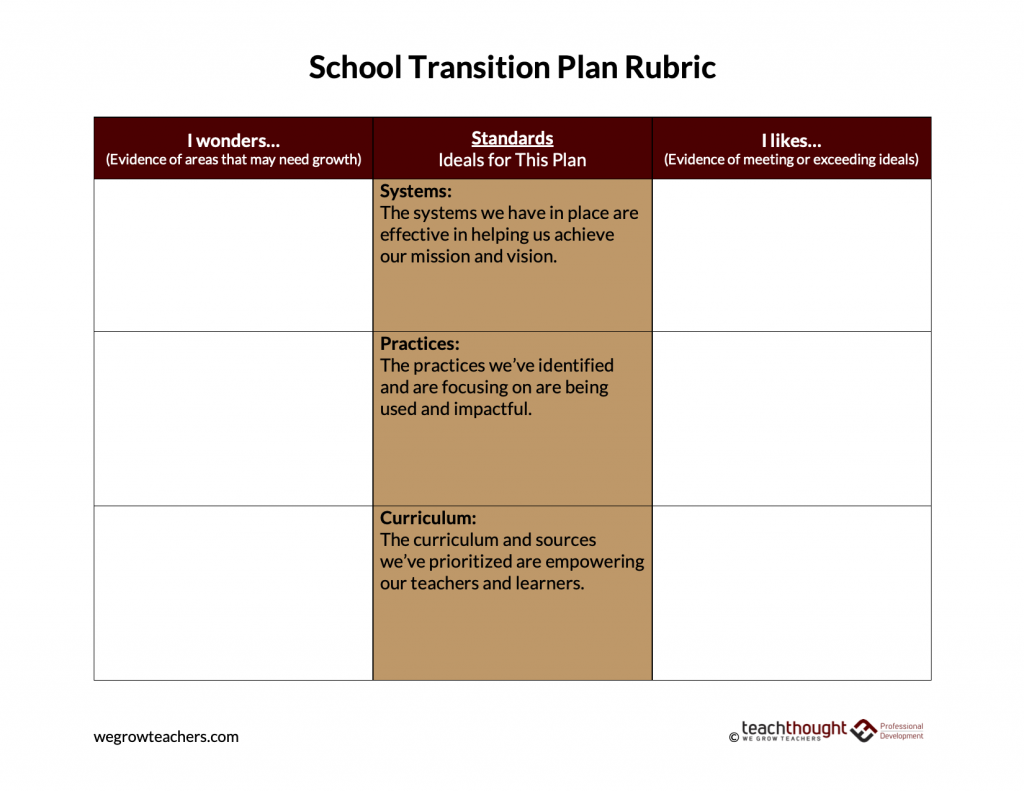
4 Steps to Prepare For The Next Version Of School
contributed by Drew Perkins
The start of every new year usually brings an increasing number of requests from school leaders looking to discuss professional development options for the spring, summer, and fall.
As we moved from January to February and into March that annual trend typically grew with each passing week. Then the world stopped. Well, at least it feels like it in so many ways, right?
So what’s next and how might we prepare? It’s impossible to know how long schools will need to conduct teaching and learning without being able to convene in-person but even then we can anticipate some things will clearly be different.
Thinking through this challenge it’s been helpful for me to lean into various processes as a framework. Clarifying your 1. mission/purpose, 2. vision, and 3. what actions will support them can provide a way to remain focused on what’s important, which seems increasingly difficult in these times of growing distraction.
See also The Problem With Most School Mission Statements
Because everything we do uses inquiry as a lens, I’ll frame our purpose or goal as a ‘Mission Question’ that includes language from our TeachThought PD mission. Your ‘Mission Question’ may differ based on your organization’s mission.
Mission Question: How can we be ready to prepare our students for the modern world in whatever circumstances we’re compelled to operate in?
As I generated questions I would need to know and answer to answer this I came up with this list:
- How do we prepare our teachers?
- What do/will our teachers need physically, emotionally, and in terms of pedagogy?
- What will the modern world demand?
- What infrastructure will we need?
- What infrastructure do we have?
- How should we think about student assessment and accountability?
- How will we reach students without reliable internet access or devices?
- How many teachers have family members that require attention during the “school day”?
- What software will help us teach effectively?
- How can we shift from less ‘content delivery’ to more inquiry, reflection, and meaning-making?
I’m certain I’ve missed some important questions that would likely surface as we worked through the process. In PBL good ‘need to know and learn’ lists are dynamic, not static, as we traverse the cognitive terrain necessary to meet the challenge.
Vision
I like to think of vision statements more as a collection of evidence.
What do we want things to look, sound, and feel like?
How would we know we’re making progress toward our mission?
What are the things we would look for evidence of happening or not happening?
Here’s the list of descriptive terms I came up with:
- a culture of connections
- collaborative
- conversational
- content and knowledge meaningfully connected by inquiry
- authentic
- important
- relevant
- empowering
- dynamic
- flexible
- responsive
Again, I’m sure there are more, or perhaps even better ways to describe the ideals we’re pursuing. Regardless, we want to make those things we’re hoping to see visible as a target with the tacit understanding that these are likely more challenging to achieve in circumstances where physical distancing still forces many of our interactions online.
Actions
Now that we know what we’re aiming for, how will we try to get there?
What specific actions are we going to take?
- professional development needs that will help teachers with tools and pedagogy
- purchasing of hardware and/or software
- clarifying curriculum focus areas and best ways to make content available
- systems and practices to build and maintain cultural cohesiveness
- assessment practices and policies for feedback, grading, and accountability
- differentiation practices for special needs (both in terms of cognitive ability and physical access) students
- flexibility for evolving circumstances of fully online (synchronous and asynchronous), a blend of online and in-person, or hopefully eventually fully in-person
Critique
The fourth piece of the aforementioned alignment cycle includes constant re-evaluation. This isn’t meant to happen once or at any particular time but as part of an ongoing examination practice.
Are the actions supporting the mission and vision? If not, why not?
Are our mission and/or vision due for an adjustment?
If what we’re doing isn’t contributing to our goal, why are we doing it?

In this critique process I like to have a lens for quality so I’ve developed a rubric to guide the thinking. This single-point rubric provides three simple qualitative statements we can use to guide our pursuit of evidence rooted in a framework we use to think about the components of school.
Using this as a tool, we can cite specific evidence of things we observe as proof that what we’ve implemented is working well or falling short. Leaning into good formative assessment practice we can be responsive to shortcomings by changing our actions to better meet those goal statements.

The reintegration of elements of normalcy is likely to be a slow and tedious process. School leaders will be forced to innovate in ways they hadn’t needed to consider before and likely with significant budgetary constraints.
Focusing on thinking and inquiry skills that will help our learners be better problem solvers seems like a no-brainer but the easier route will be content delivery. Five years from now we’ll likely have adjusted to some new normal and looking at preparation now and it’s valuable to think of this as an exercise of flexibility and agility.